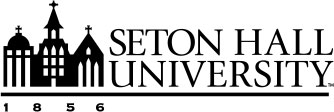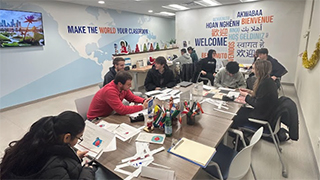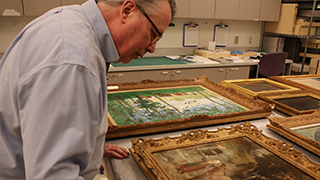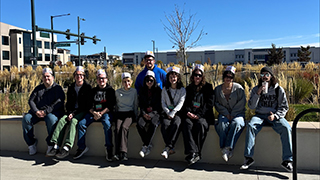Through the Lens: Professor Uses Film as Middle Eastern History Teaching Tool
Tuesday, December 3, 2024
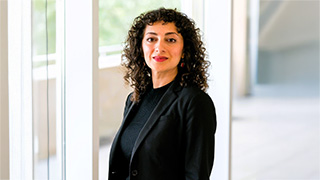
Middle Eastern history Professor Golbarg Rekabtalaei, co-director of the Middle Eastern and North African Studies Program in the Department of History
Professor Golbarg Rekabtalaei, Ph.D., an expert in Middle Eastern history and Iranian cinema, often integrates film studies into her work. As the Co-Director of the Middle Eastern and North African Studies Program in the Department of History, Rekabtalaei uses the study of the cultural nuances of film to teach history.
Born in Iran, she grew up in a household where movies were a family pastime. "My family was always very much into films," she remembers. Movies from America were in limited supply due to the political climate, but the early exposure Rekabtalaei had to Western films like Ben Hur and The Ten Commandments, and some from Iran, inspired her later academic journey.
"We watched a wide range of films, from old Hollywood to Bollywood, and it really shaped my understanding of the world and sparked my curiosity about the power of cinema," she said. The 1979 Iranian Revolution and its aftermath spurred her study of the intersections of cinema, history and cultural politics.
Her love of the cinema was always in the background, but initially, Rekabtalaei entered university as a biology major. “Like a lot of immigrant families, I was expected to become a doctor, a medical doctor,” she said. “I still like the profession and sometimes even think about it.” Her family’s immigration to Canada as a teenager, later attending university outside of Iran, however, changed her focus. "I was raised in an immigrant family in Canada, and I was deeply affected by how people perceived the Middle East, especially after 9/11," Rekabtalaei explains. "It led me to shift my focus from science to the humanities, to understand the broader cultural and political forces at play in my homeland and the region." However, she retained ties to Iranian cinema as a cultural touchpoint. “After we immigrated to Canada, I still would try to keep my connection to Iran by watching Iranian films.”
At the University of Toronto, Rekabtalaei began taking courses in Middle Eastern history, then began a master’s degree in the same discipline. One of her professors suggested she work on research related to the cultural history of newspapers and magazines, further expanding Rekabtalaei’s work in the humanities. Later, her dissertation would focus on cinema and what films can illuminate about history. Today, Rekabtalaei’s extensive research on Iranian cinema reflects an intellectual exploration of her homeland’s pre-revolutionary cosmopolitanism and evolving cultural sensibility.
After publishing many scholarly articles, among them “Introduction: Alternative Visions of Iranian Culture,” in Iran Namag: A Bilingual Quarterly of Iranian Studies 3, no. 3 (Fall 2018): iv-ix., and “Cinematic Governmentality: Cinema and Education in Modern Iran, 1900-1930,” International Journal of Middle East Studies 50, no. 2 (May 2018). Rekabtalaei produced a 2019 book called Iranian Cosmopolitanism: A Cinematic History (Cambridge University Press). It focused on Iranian cinema’s emergence in the early 20th century, and the culture surrounding it, including film critics, film magazines, cinemas and movie theaters built in Iran. All of these elements showcased Iranian history, its connection to the region and the world at large, through an artistic lens.
Her 2023 publication, "Making Stars in the Sky of Iranian Cinema: Film Magazines and the Stars of Early Popular Cinema," in the I.B. Tauris Handbook of Iranian Cinema, is a peer-reviewed chapter, and a noteworthy addition to Iranian cinema studies.
"The rise of cinema in Iran was not just about the films themselves; it was about the creation of new cultural figures, the stars," Rekabtalaei explains. "In contrast to Hollywood’s focus on glamour, Iranian cinema stars were positioned as cultural role models—individuals of modesty, education and humanitarian values." She writes that the reimagining of icons in film reflected much about Iran’s national identity and its connections to the rest of the world.
Rekabtalaei notes that the socio-political climate post-World War II, including the CIA-backed 1953 coup d'état in Iran, framed how Iranian filmmakers and critics (often with socialist ideologies) denounced the capitalist greed of film companies. They used film stars and their image to project their sense of national, ideological and artistic values, and to shape the future of Iranian cinema as a national high art form. This was in contrast to America’s big-glamour Hollywood’s sex appeal.
The evolution of Iranian cinema from the late 1940s into the 1970s was full of intrigue, Rekabtalaei explained, and much industry change. World War II saw the development of consistent commercial films and more diversity in its players. The emergence of an alternative film movement was in direct contrast to prior populist ideas, and it was far more political. “It drew on a lot of tropes and motifs in popular films,” she said, “and attended to more politically inclined debates of the time about decolonization, about imperialism, about what would be called Third World nationalism.” Pride in developing countries that had just become decolonized and sovereign, or fought against imperialism were themes, and they drew inspiration from international movements like the French New Wave and Italian neorealism.
Teaching courses on Middle Eastern history, Iran’s cinematic history, oil and turmoil in the region and youth culture, gender and women in the Middle East, are extensions of professor Rekabtalaei’s passion for her home country. As a professor, she connects historical events with culture, particularly through film. "Cinema is a powerful tool for understanding history and politics," Rekabtalaei explains. "It allows students to engage with the past in a dynamic way and see how culture reflects and shapes political realities."
Categories: Arts and Culture
